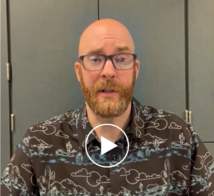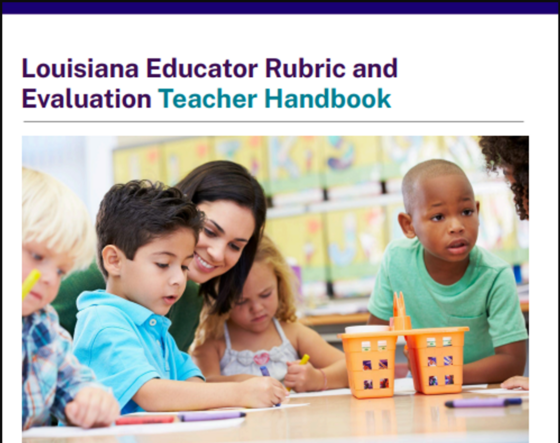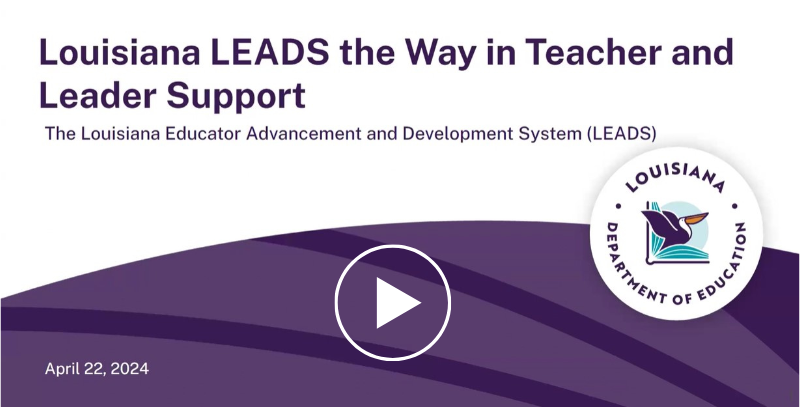|
|
Self-assessment is a cornerstone of professional growth, and we believe it’s an essential element of the LEADS process. By offering the opportunity to reflect on our own strengths and areas for improvement, we empower ourselves to take a more active role in shaping our success. This reflection fosters a sense of ownership, self-awareness, and accountability, creating endless opportunities for growth and progress.
As a teacher, reflection became a daily practice as I considered, “What went well today? What could have been done differently to better meet the needs of my students?” Still today, I continue this habit, reflecting on how I can best serve others and improve. Reflection is not just a tool, it’s an essential component of growth.
In this month’s newsletter, we take a closer look at the self-reflection aspect of LEADS. We hope this issue not only provides clarity but also inspires you and your team to explore how incorporating meaningful reflection can enhance your professional development.
As always, please don’t hesitate to reach out to us at the LDOE with any questions or thoughts as you begin your journey with LEADS.
Dr. Jenna Chiasson
Deputy Superintendent
|
|
Success Stories

“I have always thought I was a proficient teacher, but the rubric made me dig deeper and really reflect on my instruction. The self-assessment/self-rating has impacted my professional practice in a positive way. It allows me to see where my refinement areas are and work on building my capacity in those areas.
My advice for teachers new to LEADS would be to practice the self-reflection component before your first observation. That will help you to think about where you might want to grow.” - Felicia Harris, a Master Teacher in Claiborne Parish
|

Watch the interview with Mike Jonker, a 5th/6th grade math teacher at Forest Hill Junior High in Rapides Parish, as he describes how the observation process has supported his reflective practices and how self-assessment with the rubric has positively impacted his instructional practices and focus on student learning.
|
|
|
Teacher Toolkit
 Louisiana’s new evaluation system, LEADS, promotes collaboration and support for professional growth. Teacher reflection and self-assessment are new and essential parts of the process. As teachers settle into classroom routines and relationship-building with students, they can begin thinking about how to successfully prepare for their first observation of the school year.
How can teachers make the most of this professional growth opportunity?
Lesson reflection is a powerful strategy that effective teachers use to analyze and evaluate their own teaching practices so they can better understand what works best for their students. The observation offers an opportunity to receive feedback and use self-reflection to strengthen your practice. One way to make the most of this opportunity is to prepare for the self-assessment component of the observation process.
The Teacher Handbook provides teachers step-by-step instructions and guiding questions for the self-assessment process. Try walking through one or more of these steps to practice reflecting on a recent lesson as a way of preparing for your first observation and the self-reflection process that takes place after the lesson.
Some actions you could take to practice self-reflection could include:
- Gather student work from a recent lesson, analyze the student work, and look closely at the work of students approaching mastery. What might you have done differently to help those students reach mastery?
- Choose an indicator from each of the domains: Planning, Instruction and Environment. Reflect on an instructional decision that aligns to an indicator you selected, and the impact that decision had on student learning. What rating might you give yourself on that indicator?
- Based on the student work you analyzed, and your reflection on the indicators from the rubric, what do you think was a strength of the lesson and why? What was an area for growth in the lesson, and what steps might you have taken that would strengthen student learning?
- On the Professionalism Domain, choose an indicator and rate where you are on that indicator at this point in the year. Practice writing down evidence that supports your rating.
The LEADS Teacher Handbook includes the steps and questions that your observer will use to guide the self-reflection part of the observation. After reflecting on these questions, you will submit your own self-reflection. The self-reflection portion of the observation gives teachers a voice in the process, and an opportunity to receive support to analyze and strengthen their practice.
|
|
|
To review the 5 steps and guiding questions for self-assessment, refer to pages 128-129 of the Teacher Handbook.
"The more reflective we are, the more effective we are."
Section 301 of Bulletin 130 provides for self-assessment to be included in the qualitative assessment score of educator evaluations. This addition of self-assessment in the evaluation process promotes reflection and teacher ownership of the evaluation process. Research by Pete Hall and Alisa Simeral concludes that, “The more reflective we are, the more effective we are.” By using the Louisiana Educator Rubric to reflect on how our instructional practices impact student learning, we develop a deeper understanding of how the rubric defines instructional excellence.
|
|

Take a moment to review the Louisiana LEADS the Way in Teacher and Leader Support recorded webinar and companion deck. This webinar is a great resource to develop a deeper understanding of the evaluation process. As you reflect and complete the self-assessment component it is important to remember that the rubric supports the shift from student engagement to student ownership of learning. Slides 20 and 21 illustrate the student progression of learning toward ownership.
|
|
Shortcuts to Success: LEADS Quick Links |
|
|
|
|